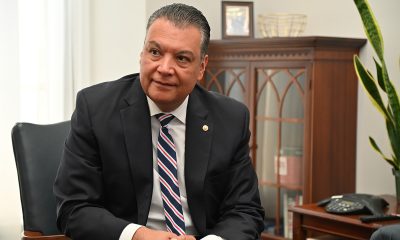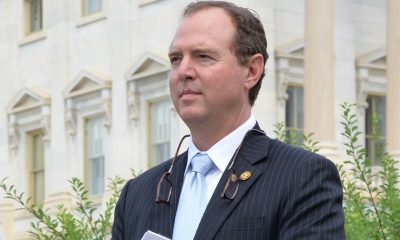COMMENTARY
From Pulse to Parkland, continuing the fight against gun violence
This year at Pride, we march for safety, inclusion and equality
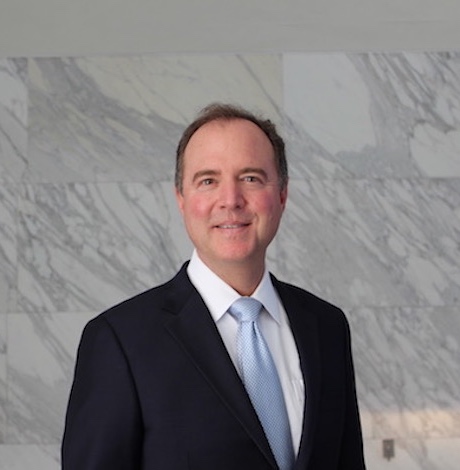
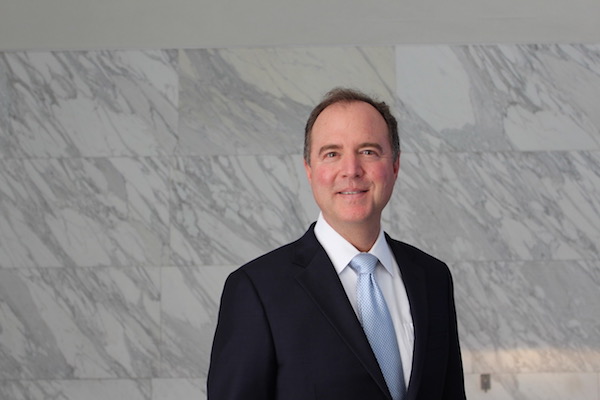
Rep. Adam Schiff represents California’s 28th District, including West Hollywood. (Photo by Karen Ocamb)
Marching in the Los Angeles Pride Parade is an experience unlike any other. The first few years I marched, the atmosphere was jubilant and attendees reveled in each other’s company during a weekend full of concerts, vibrant nightlife and culture.
But two years ago, the mood was dramatically altered, for tragedy had intervened. The night before the 2016 parade in West Hollywood, a gunman opened fire at Pulse, a gay nightclub in Orlando, Fla., killing 49 people and injuring 53 more. It was an act of terrorism, and it was the deadliest mass shooting incident to ever target LGBT individuals in the United States. At the time, it was also the deadliest mass shooting in U.S. history, tragically overtaken by the shooting in Las Vegas a year later.
The Pulse nightclub shooting was shocking and horrific, and it profoundly affected the spirit of Pride across the country. There was also a great deal of uncertainty — we weren’t sure if the Los Angeles Pride Parade was a target. At the beginning of our parade, we united for a moment of silence, resolved that we would work together to demand congressional action on commonsense gun safety measures.
Last year’s Pride festival also differed from past celebrations. In that first year of Donald Trump’s presidency, we came together to speak out against the president’s hateful rhetoric and actions, especially those targeting LGBT Americans. Instead of a Pride Parade, we led a Resist March and rallied together to try to change the direction of our country.
Since last year, much has changed and much has, tragically, stayed the same. We still have a president who thrives on chaos and division, and puts the tenets of our democratic system to the test on a daily basis. Perhaps the only positive development: Millions of Americans who have never been politically active are engaging like never before.
Many of these new, passionate activists are from a younger generation. Some of the most powerful new leaders were borne of yet another gun tragedy. In February, 17 students and faculty were killed in another horrific school shooting – this one at Marjory Stoneman Douglas High School in Parkland, Fla. In the aftermath, young survivors of the shooting and young people across the nation have stepped up to say: ENOUGH. They are rightly fed up with the lack of meaningful action from elected officials—across the country, at every level – in response to the gun violence plaguing our schools and our entire society.
Parents are now forced to have difficult conversations with their kids about whether they will be safe at school. How horrifying to see the footage of a young survivor at the recent shooting in Santa Fe, Texas explain that yes, she fully expected such a nightmare to take place at her school. Something must change.
And something is. Young people are changing the conversation about gun violence. They have launched a movement to change minds, to change laws, and to force adults to reckon with the effect that weak gun laws have had on our country. And they are just getting started – this month, Parkland students are launching a nationwide bus tour to register young voters.
I hope these brave students, and those they mobilize, will make a real difference. So much depends on it. And while no one law can prevent all mass shootings, we still must try. Here is where we can start:
First, Congress must pass universal background checks, a policy supported by nearly 90 percent of the American people, including the vast majority of gun owners.
Second, we must reinstate the Assault Weapons Ban. This law was one of the most effective means of taking these weapons of war off the streets, and Congress shamefully allowed it to expire in 2004 to the delight of the National Rifle Association.
Third, we must stop ascribing mass shootings only to mental illness. The NRA and its congressional allies use this tactic to avoid talking about the role guns play in these tragedies. Addressing mental health is important, but it’s only one piece of the puzzle. We must do everything we can to increase access to mental health services and reduce the stigma of mental illness, but slavishly blaming mental illness for gun violence only stigmatizes it further, and makes it harder for those that need help to seek it.
Finally, we must end the gun industry’s special immunity from lawsuits. I’ve introduced legislation that would pierce the gun industry’s liability shield by putting an end to the special protections that gun manufacturers, sellers and interest groups receive when they shirk their fundamental responsibility to act with reasonable care for the public safety. Victims of gun violence deserve their day in court.
No single step is a cure-all, but together they can create real change. We need your help. Call your representatives and senators at 202-224-3121 and demand they take action. Vote in local, state and federal elections for officials that will fight the scourge of gun violence by passing gun safety reform measures. Fight against the NRA and its allies, which try to stifle this agenda.
Every year I look forward to celebrating Pride in Los Angeles. This year, we once again march for safety, inclusion and equality. We continue to celebrate our LGBT community and its allies, and actively support the thousands of young people dedicated to creating real and lasting change. There is a lot of work to be done. I hope you’ll join me.
COMMENTARY
The hazards of hating ‘Heated Rivalry’
With public opinion of the LGBTQ community under fire, a show about closeted hockey players and their budding romance has galvanized audiences.

Whether you have heard about the salacious sex scenes, the hype, or the attractive leads, Heated Rivalry has clearly found its place in the zeitgeist. Whether you’ve seen it, love it, hate it, or have strong opinions knowing nothing about it, this show has become a hot topic for the LGBTQ community.
With public opinion of the LGBTQ community under fire, a show about closeted hockey players and their budding romance has galvanized audiences. Based on one of the Game Changers books by Rachel Ried, this series has launched countless memes, TikTok think pieces, and the stars appearing everywhere from Vanity Fair to Hi Tops bar in West Hollywood.
Some of the hot takes include taking issue with the source material being penned by a woman, speculation over the sexual orientation of the stars, and, as actor Jordan Firstman would have us question, is the sex unrealistic? The I Love LA star started beef with his HBO Max coworkers by dragging the show. However, some social media content has quickly squashed the beef. That’s the power of Heated Rivalry.
The question is, why the hate? The fundamental issue is that we end up popping our own balloon. This show and the dialogue surrounding it reveal many blind spots of the gay/queer male community. Drunk on the multiple iterations of Will & Grace and Queer as Folk, we can assume there is an inexhaustible pool of queer content that can break out into the mainstream. We also hold it to impossible standards: not gay enough, too gay, too much sex, not enough.
Heated Rivalry is a love story of two hockey players whose eponymous Heated Rivalry turns to sexual tension, to sex, then maybe…romance? Word of mouth has led to appointment viewing like other signature shows on HBO.
One beef is that people take issue with the fact that it’s focused on athletes. Why this story? Why venerate masculinity? And yet, don’t gay men still venerate masculine and even straight men? There are still gay for pay pornstars, pressure to have the body of an athlete, and an outdated sexual fixation on performative masculinity.
Why not explore the last bastion of homophobia: professional athletics? If someone of Travis Kelsey’s level of fame could come out, wouldn’t that help people stop focusing on queer issues as a reason for the ills of society and maybe look at the real issues?
It’s not surprising, given our political climate, that both Boots and Heated Rivalry would come out around this time. Both explore homophobia and queer men in heteronormative spaces. Major league athletes are still less likely to come out, while the repeal of Don’t Ask, Don’t Tell has made it easier for queer men to be in the military. They represent widespread appeal to straight communities. After all, where else can a straight man cry and scream than about his favorite sports stars?
Another problematic thing is speculating about the actors’ sexualities. Whether they are queer or not, they are representing our community fairly well. My personal theory is
Connor Storrie is a gifted actor somewhere under the LGBTQ umbrella, and Hudson Williams is a soft heterosexual bottom. Both represent a queer experience.
What matters more is their performances. Storrie learned Russian for the role and has a Meryl Streep-level transformation from an LA actor/model to a Russian athlete with an awe-inspiring caboose. Williams captures so much nuance and holds it down for masculine bottoms.
Finally, who cares if the source material was written by a woman? As queer men, especially gay men, we may rarely interact with women, but we can afford to learn the benefits of integrating emotional and social intelligence, which women are more allowed to cultivate socially.
Ironically, the female fanbase driving up viewership and rhetoric around the show is doing more allyship than a million bachelorette parties at gay bars.
Fundamentally, Heated Rivarly is giving queer men something to gab about and invite discourse in the same way that Drag Race became the Super Bowl of hyperfemininity and helped queers connect and converse. Heated Rivalry offers a tender romance amid the toxic masculinity, intimacy issues, and competition of toxic masculinity.
My personal theory for all the hostility and hot takes about Heated Rivalry is that it centers on yearning. One thing women get permission to do is have a healthy relationship with longing. With queer men, it’s often one-sided and creates this dark addiction to yearning for someone who doesn’t want us. This turns into codependent crushes on your best friend or a hyperfixation on turning a friend with benefits into a partner, all while ignoring the people who want us.
Longing is a slow-building, uncomfortable emotion that explores the range from happiness to sadness. You can try to fuck it away or explain it to bits but for a community inoculated against feelings by the patriarchy, bullies when we were younger and drunk on the power of polyamory and Dan Savage’s countless anti-monogamy talking points, the idea that two men can meet, have a slow budding relationship, build a rapport, develop intimacy slowly over time, and fundamentally realize they want to be together is not the norm. This could be aspirational and may be why the universe inspired a woman to write it, a gay man to develop it into a series, and two actors of indeterminate sexual attractions to play the sex scenes and the emotional angst so we could take a hard look at how we see male love.
COMMENTARY
Why Rob Reiner’s murder hit this old lesbian hippie so hard
Addiction kills. Journalist Karen Ocamb dives into mental health and addiction themes to explore coping with Rob Reiner’s murder.
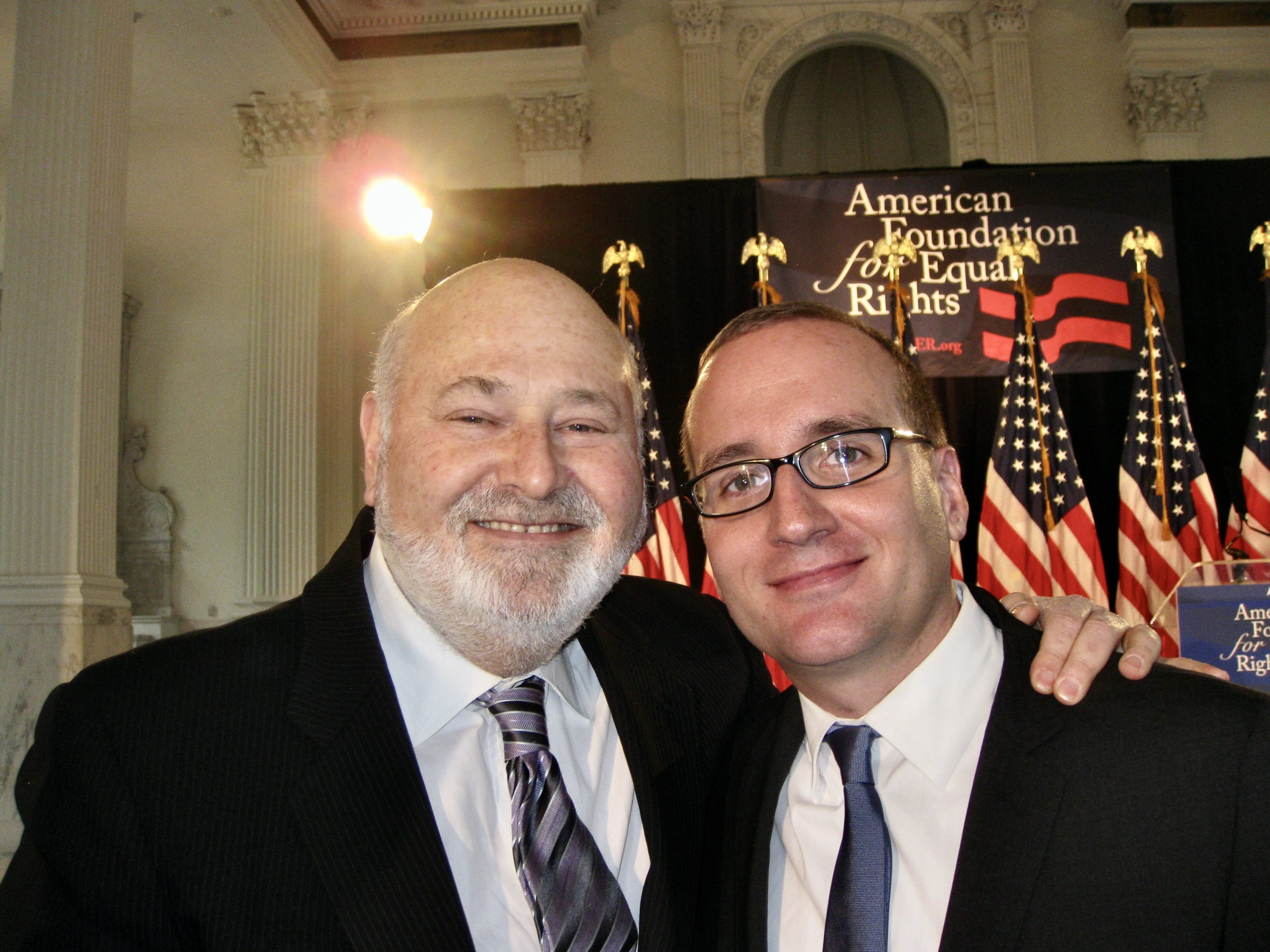
Rob Reiner was an anomaly in Hollywood: the unabashedly Democratic liberal “good guy” who honestly wanted to dialogue and passionately debate issues such as marriage equality with Republican conservatives as a way of advancing democracy and seeking a more perfect union.
“I’ve always said, ‘You cannot have a healthy democracy unless you have a healthy Republican Party and a healthy Democratic Party so that we can actually debate the ideas of where we are,’” Reiner told Republican political commentator Margaret Hoover, host of PBS’s Firing Line With Margaret Hoover, in a tribute rebroadcast of a show recorded April 2019. “I mean, we are a…capitalist nation, but we also have a lot of socialist programs inside the capitalist nation, and we have to find a way to balance those things. And the only way to do that is to have two parties arguing with a common set of facts.”
Reiner talked about how he befriended many Republicans after Republican legal icon Ted Olson shared his deep belief that marriage is an individual freedom and therefore a fundamental right for lesbian and gay individuals. He reminded Hoover, a longtime LGBTQ+ ally, that they first met at the federal district court in San Francisco for the hearing over California’s anti-gay Prop 8. She excitedly reminded him that they sat together.
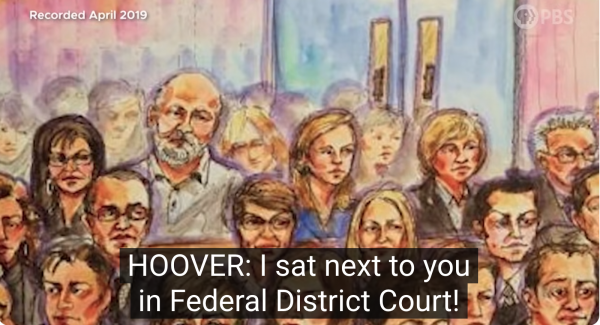
Hoover actually served on the Advisory Council for the American Foundation for Equal Rights (AFER), the organization Reiner created with longtime gay friend and fellow progressive advocate Chad Griffin and Griffin’s business partner Kristina Schake. The idea for the federal challenge to Prop 8, which passed with 52 percent of the vote in 2008, started formulating soon thereafter during a lunch with the three and Michele Reiner at the Polo Lounge in the Beverly Hills Hotel. Later, an acquaintance suggested they contact Ted Olson, who supported marriage equality. Reiner shared his excitement when Democratic stalwart David Boies, Olson’s opponent in the infamous 2000 Bush v Gore case, joined the federal case, effectively taking politics out of the argument. (Read New York Times investigative reporter Jo Becker’s book Forcing the Spring: Inside the Fight for Marriage Equality for an engrossing behind-the-scenes look.)
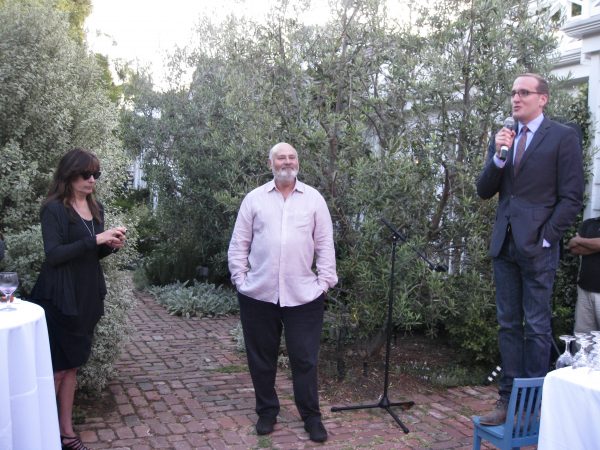
Watching Hoover and Reiner spar, laugh, and exchange stories is a horrific reminder of what we’ve lost. Who else could head up a Truth and Reconciliation Commission after Donald Trump and his acolytes have left the scene?
The sudden brutal stabbings of Rob Reiner and his beloved wife Michele in the bedroom of their Brentwood home in the early morning hours of Sunday, Dec. 14, allegedly at the hands of their drug addicted, mentally ill son Nick, hit many of us personally. Through his acting, writing, and incredible films, or through his work on progressive issues, we felt we knew Rob Reiner. And our hearts break for their immediate and extended family.
“Words cannot even begin to describe the unimaginable pain we are experiencing every moment of the day,” Romy Reiner, 27, and Jake Reiner, 34, said in a statement Wednesday. “The horrific and devastating loss of our parents, Rob and Michele Reiner, is something that no one should ever experience. They weren’t just our parents; they were our best friends.”
The siblings requested respect. “We are grateful for the outpouring of condolences, kindness, and support we have received not only from family and friends but people from all walks of life. We now ask for respect and privacy, for speculation to be tempered with compassion and humanity, and for our parents to be remembered for the incredible lives they lived and the love they gave.”
But their request was met with outrageous moral indecency from Trump and click-bait speculation by Megyn Kelly that Nick’s attorney might try the Menendez defense.
While these cruel antics have generally been met with disgust, other human beings are bearing their anguish over the murders and the alleged murderer in silence.
Those who experience mental health issues and their sphere of healthcare providers face heightened uninformed stigma after it was revealed that Nick had been diagnosed with schizophrenia several years ago and his medication had recently been adjusted or changed.
And many in 12 Step communities are bereft. We are excruciatingly familiar with alcoholic/drug addict arrogance, impulsiveness, and the compulsion to get what we need by any means necessary. “I want what I want when I want it – and I want it NOW!”
And this: “An alcoholic is someone who could be lying in a gutter and still look down on someone.”
And then there’s rage that’s so chemically exhilarating, you forget what you’re enraged about.
Whether hooked, self-medicating, or mixing street drugs with pharmaceuticals, there are some drugs that can take a brain hanging ten over a cliff of insanity and tip it over with a whisper or nudge. Some who have fallen don’t get back up. Others don’t want to.
What are loving parents to do?
LSD tipped me over; at the age of 20, I became a ward of the State of Connecticut after an almost successful suicide. The nurses put me in a bed previously occupied by a young woman who hoarded her sleeping pills and died there three days earlier. The staff asked me if I needed any pills to help me sleep.
The absurdity was clarifying. I stayed in that Norwalk Hospital psyche ward for months – my parents were too afraid, too ashamed to visit, and left me to “experts” who visited for 10 minutes and lots of Nurse Ratched wanna-bes. I learned what I had to do to avoid shock “therapy” – smile, nod, lie, and not judge my fellow inmates.
When I finally got out, I gave up LSD and, having dropped out of college, I studied philosophy at Fairfield University. My brain kept pressing existential questions as if they were immediate and real. I took up the occult and hitchhiked to Alfred University in Upstate New York to study A.E. Russell, W.B. Yeats, and the Rosicrucians. I lived with a bunch of witches and warlocks with whom I drank beer and watched the original “Star Trek” broadcast from Canada – after which we smoked doobies and argued existential bullshit about each episode.
One guy in the house had dropped so much acid that he was stuck. He’d either wander around blank-eyed or jump on the furniture like a threatening chimp. I was glad I’d given up acid.
I didn’t get clean and sober until 1980 when my bosses at CBS News thought I’d make a good test project for their new Employee Assistance Program. The theory was: it’s easier and cheaper to sober up a good, screwed-up employee than to hire and train a new one. I balked. I had reasons. I had excuses. They didn’t understand. I’d stop on my own.
But I couldn’t stop, and they did understand. They gave me an ultimatum. Go to rehab or get fired. I thought of jobs where I could drink and use without hassle. But being a journalist had become my identity. Who would I be without that? Now that was an existential question.
I had two bad glasses of white wine and smoked a joint before I went to a rehab that June near the Amityville Horror House. But I’ve been clean and sober ever since.
It took me WAY LONGER to surrender my alcoholic arrogance, and even decades later in recovery, I still have bouts of depression, which I link to my dormant addiction. Today, I cherish life and my choices.
But with Rob and Michele Reiner’s murders, a rehab phrase has reappeared: “You know you’re getting better when you’re homicidal and not suicidal.”
I know this was intended metaphorically to help a suicide addict like me: first, a ludicrous smile; then accessing the long-oppressed anger, fear, and abandonment; then taking steps to get out of it. But recognizing that addiction kills is no laughing matter.

I do not know Nick Reiner. I met Rob Reiner through Chad Griffin and AFER. However, like so many others, I appreciated him “representing” hippies as caring progressives on “All in the Family.” He was similarly caring in real life, as evidenced by his humble, emotional reaction on Piers Morgan’s show, honoring Erika Kirk’s forgiveness of her husband Charlie Kirk’s assassin.
I do not know Nick’s story – I do not know the anguish of having schizophrenia and drug addiction. But I know in my heart his parents loved him to the moon and back. I suspect Romy and Jake and the Reiners’ friends are struggling not just with unimaginable grief but with how, in some way, to have compassion for this ill addict they loved who lived among them.
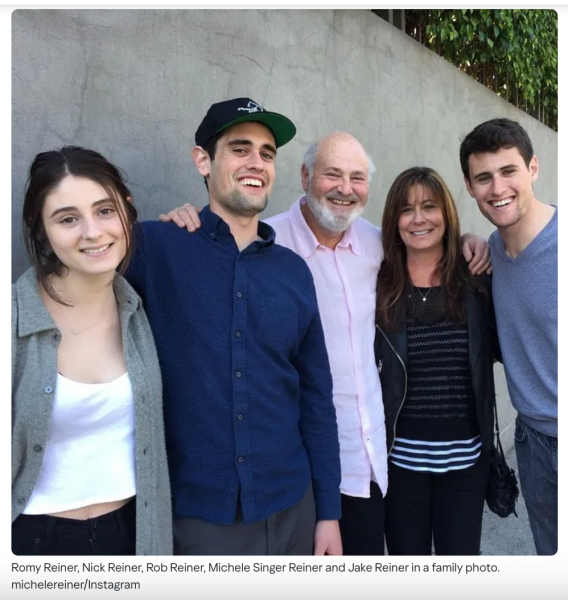
Perhaps this is an odd way to express gratitude to America’s greatest “good guy.” I hope by sharing my story, the spirits of Rob and Michele may realize they did everything they could – they did not fail their son. He, too, has individual freedom – including to make horrible wrong choices willingly, even those orchestrated by addiction. Or did mental illness combined with addiction strip him of that choice?
Forgiveness is not yet on the horizon. But perhaps a greater willingness for compassionate understanding can be.
And hopefully, by sharing these human frailties, those who are struggling will find the strength to defy stigma, fear, and addiction’s arrogance and reach out for help.
As for me, today, I humbly acknowledge: “There, but for the Grace of God, go I.”
SAMHSA’s National Helpline is a free, confidential, 24/7, 365-day-a-year treatment referral and information service (in English and Spanish) for individuals and families facing mental and/or substance use disorders.
This essay was updated from the original posted on Karen’s LGBTQ+ Freedom Fighters Substack.
COMMENTARY
Dating during the holidays: Why cuffing season hits GBTQ men so hard
For GBTQ men, the holidays can be one of the loneliest times of the year. Seasonal depression ramps up, it gets darker earlier, it’s colder, and suddenly everyone around you seems to be coupling up
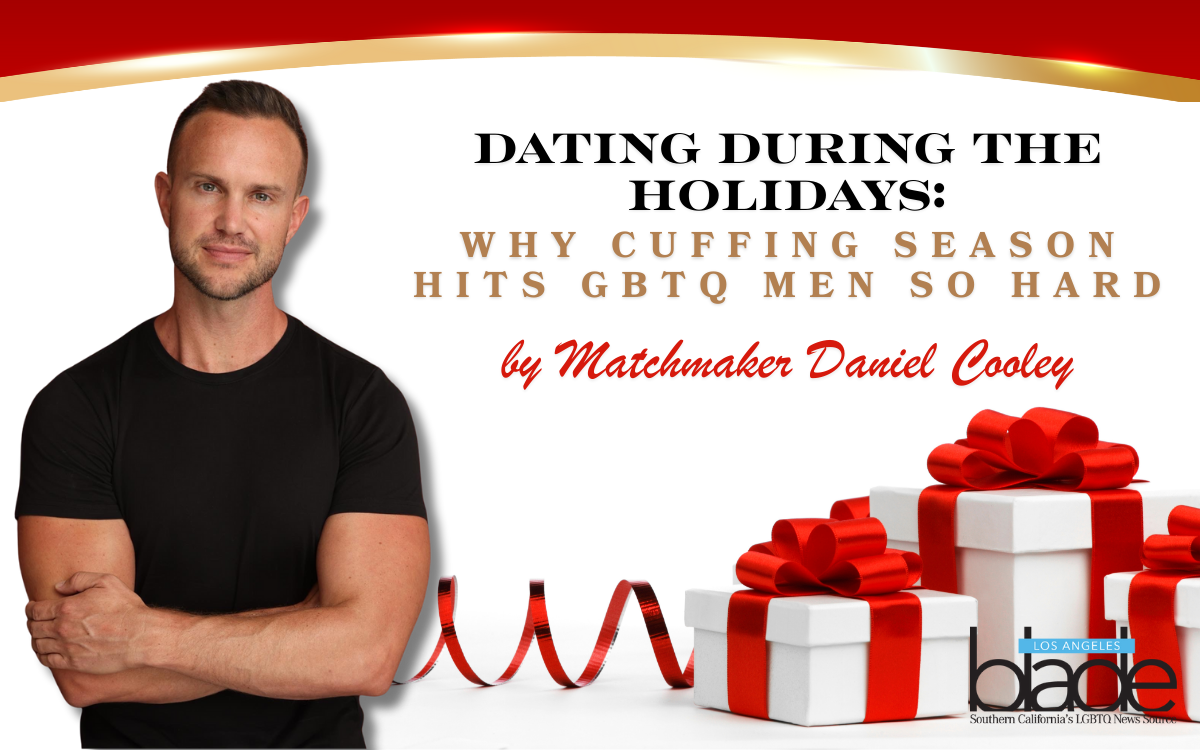
The holidays do something to us.
They pull at our hearts, our memories, our wounds, and our longing, all at the same time. And honestly? Dating during this season can feel like an emotional obstacle course.
For GBTQ men, the holidays can be one of the loneliest times of the year. Seasonal depression ramps up, it gets darker earlier, it’s colder, and suddenly everyone around you seems to be coupling up. It’s like the whole world collectively decided to jump into a cuddle puddle and forgot to send you the invitation.
And that’s why “cuffing season” is a real thing.
People want warmth. They want touch. They want a body next to them under the blankets while the rest of the world posts family photos with matching pajamas.
We want connection.
We want closeness.
We want someone to come home to when everything feels cold.
But here’s the deeper truth — especially for queer people: A lot of us didn’t grow up with magical holiday memories.
Many of us were rejected, or disowned, or made to feel “different,” and the holidays can bring all that trauma back like it’s happening in real time. While other families were singing carols, some of us were hiding in our rooms, praying no one would notice how “different” we were.
So now, as adults, having a partner during the holidays can feel like having a chosen family.
It feels safe.
It feels comforting.
It feels like someone finally picked you.
And there’s nothing wrong with wanting that. We all deserve love. We all deserve someone who makes us feel held.
But…
(you know there’s always a “but”)
We also have to ask ourselves:
Is this connection real? Or is it holiday loneliness wrapped in mistletoe?
Are we craving a partner, or are we craving comfort?
Does our heart need love? Or does it just need some warmth and self-compassion?
Because cuffing season relationships can be beautiful, but they can also be Band-Aids. Temporary. Convenient. Easy.
The real question is:
Do you want a partner for the holidays… or a partner for your life?
And if you’re single right now, as a matchmaker, I want to share something important:
You’re not behind.
You’re not failing.
You’re not missing some magical holiday checklist.
Being single during the holidays is not a punishment, even though it can feel like it when you’re sitting on your mom’s couch watching your siblings and cousins live out their Hallmark movie fantasy. Their husbands, their wives, their perfect kids, everyone in matching sweaters — and you’re like, “Cool, I’ll just be over here in the corner petting the dog.”
But disappearing into the extra bedroom and crying into a pillow isn’t your only option.
(Though if you need a five-minute cry, listen… you’re human.)
As a private matchmaker, here’s what I tell my clients — and myself! — every year:
1. You don’t need a partner to belong.
Chosen family is real. Friends are real. Community is real.
Sometimes your holiday joy comes from the people you choose, not the people you were born into.
2. You are allowed to create your own traditions.
A queer Christmas.
A gay Friendsgiving.
A holiday dinner with your spiritual family, your gym friends, your brunch crew, your book club.
Your joy isn’t limited to the house you grew up in.
3. Self-love is not a consolation prize.
It’s the thing that makes every relationship — including your future one — healthier.
4. The holidays aren’t a deadline.
Just because the world feels coupled doesn’t mean you have to rush into something just to survive December.
As a matchmaker, I see the other side too. And here’s what I want you to remember:
A lot of people do find love during cuffing season — real love, lasting love, beautiful love.
Because when loneliness rises, so does honesty. People open up more in the winter. They’re more vulnerable and willing to take a leap.
But whether you’re dating, single, complicated, or “it’s a long story,” know this:
You are not alone.
You are not behind.
And the holidays don’t define your worth.
If you end up in a relationship this season — amazing.
If you don’t — you still belong, you are still loved, and your story is still unfolding exactly how it’s supposed to.
And who knows…
Maybe next December, you’ll be the one cuddling up with someone who feels like home.
But for now?
Give yourself grace.
Give yourself compassion.
And give yourself permission to experience the holidays in the way that feels right for you.
You’re not broken.
You’re not missing anything.
You are enough today, this month, this season, all of it.
Daniel Cooley, LGBTQ+ Matchmaker & Co-owner of Best Man Matchmaking – California’s premier service for queer and trans men seeking emotional connections. Learn more here.
Join us at our Gay Singles Night on Thursday, December 3rd, at the Geffen Playhouse with LA Blade’s Matchmaker Daniel Cooley for an unforgettable evening! This evening includes a post-show talkback. Use code: LAB49T17 for $49 (includes per ticket fee) for Premium, Section A, or Section B seating. No ticket limit. No refunds or ticket exchanges. Visit geffenplayhouse.org to purchase your tickets. Code also valid for performances Dec.4-7, including weekend matinees.

Opinions
Mattachine Society in LA marks 75th anniversary
Seven gay men met in Edendale home on Nov. 11, 1950.

On Nov. 11, 1950, Veteran’s Day, seven homosexual men met in a home in what was then called the Edendale section of Los Angeles, now referred to as Echo Park. They came together, secretly, recruited by Harry Hay to found the Mattachine Society, the commencement of the long march to freedom by LGBTQ people in the United States. A statue needs be erected in L.A. to honor those seven men: Hay, Bob Hull, Chuck Rowland, Rudi Gernreich, Dale Jennings, James Gruber, and Konrad Stevens.
I still get chills as I read the oath of initiation taken into the Mattachine that day to the sounds of Pachelbel’s “Canon” softly playing in the background, an oath eventually heard around the world: “We are sworn that no boy or girl, approaching the maelstrom of deviation, need to make that crossing alone, afraid and in the dark ever again.”
In that oath about the “boy or girl,” the word “deviation” reverberates through a thousand years in the West of hetero supremacy and enforced heterosexualism with all that implies. All LGBTQ people were once that “boy or girl.” Thus began a core principle of LGBTQ community — we assume responsibility for each other.

Nov. 11, 2025, marks the 75th anniversary of that moment. As far as my information at this time, as a gay elder, I’m embarrassed to report to those seven gay ancestors: not a single event is planned in L.A. to commemorate that historic date, just as L.A. Pride occurred in WeHo on the 50th anniversary of the Stonewall Rebellion, the reason for Pride’s existence, without ever mentioning a word about Stonewall.
Why is that erasure of important LGBTQ history happening in L.A. and elsewhere? In previous articles in the LA Progressive, I have tried to explain that erasure by the Elite Capture of the LGBTQ community with top-down leadership, a total blackout of local news or investigative journalism, community members becoming spectators rather than participants, and new community moral values that reduce everyone to donors and consumers.
While a very short-lived effort was made in Chicago in the 1920s, which was quickly broken up by the police, the Mattachine represents the first successful attempt in the U.S. at organizing homosexual men and women. They used the oppressor’s word, “homosexual,” to describe themselves. After World War II, several of the men had been members of or had flirted with the U.S. Communist Party or were members of other progressive organizations, where they learned organizing skills, analysis of social problems, and secret organizing. It was that secret organizing, as necessary as it may have been, that became its Achilles’ Heel. Hay was kicked out of the CP by CP leader Gus Hall’s purge of known or suspected homosexual men and women after World War II.
The name “Mattachine” came from the word “matticini,” one of the names for jesters in royal courts of medieval Europe which Hay deduced from his research were homosexual men.
The Mattachine is important for more than just existing for three years (1950-1953). In its original organizing “manifesto,” written by Hay, for the first time in U.S. history, homosexuals identified themselves as an oppressed minority group. The document also declared that a hidden homosexual culture existed. Also, it implied that collective political action was needed. That collective political action eventually came from Mattachine’s grandchildren with the fire and fervor of the collective action of the Gay Liberation Revolution (1969-1985) — the Great Awakening. Will Roscoe’s “Radically Gay” will introduce you to this valuable historical written material of the Mattachine.
The Mattachine was a top-down organization based on a secret model of five levels that had been used by the Free Masons in 15th century Europe and later employed during World War II by the French Resistance. The original seven members were on level-five and newcomers on level one, not knowing who was on the levels above them. Such organization, it was felt then, was necessary due to the viciousness and life destroying consequences at that time by U.S. hetero supremacists if homosexual identity were ever made public. Until the 1969 Stonewall Rebellion and its aftermath, sane paranoia based on individual protection and survival characterized homosexual reality.
The Mattachine’s most important contribution then was the use of private discussion groups that gave gay men and lesbians, for the first time, an opportunity to talk with each other about their lives and how hetero oppression was directly impacting them. But these groups often met cautiously.
There was one discussion group in an apartment building in Hollywood that required members to arrive as fake male-female couples, the men wearing male attire and the women in dresses, lest the neighbors suspect that a homo group was meeting next door and alert the LAPD, who could soon be knocking on the door.
By late 1952-early 1953, it was reported that Mattachine had created almost a hundred discussion groups in California with about 2000 participants, a stunning achievement for the early 1950s. There were also Mattachine organizations happening in New York City; Washington, D.C.; San Francisco; and elsewhere. The discussion groups by then were taking on a more grassroots character with a wide range of people from various political proclivities and social classes, but, given the enforced racial segregation practiced in L.A. then, virtually all were white. There were whispers about their own publication.
Then, in March 1953, all hell broke loose when Paul Coates, a widely read newspaper columnist in the U.S., reported publicly for the first time the existence of the Mattachine in Los Angeles and the ties of some of its organizers to the Communist Party during the Red Scare period. I speculate that Coates was tipped off by J. Edgar Hoover and the FBI who, after their first priority, the Red Scare, focused on their second priority, the Homo Scare.
The Mattachine was thrown into turmoil, not knowing whose outing was next, and the seven level-five men unmasked themselves.
At a meeting of the Mattachine at the First Unitarian Church, then on Crenshaw Boulevard, in the Spring of 1953, Hay and other founders resigned in the best interest of the organization, which was taken over by conservative Hal Call and moved to San Francisco, which is a sad story for another time. In my many dialogues with Hay about this period, he always referred disdainfully to the San Francisco group as the
“Second Mattachine,” to clearly differentiate it from the first.
Out of that chaos, in Los Angeles was formed ONE, Inc., which ushered in the conservative, Republican-led Homophile period (1953-1969), centered in Los Angeles, that recorded successes and failures which I have written about previously in the L.A. Progressive.
One essential way of understanding the Mattachine and Homophile periods is through the lens of the historiography of liberation movements. Both the Mattachine and Homophile years represented what is seen as “secondary resistance,” which involves the preparation of an oppressed people for liberation through discussion, writing, education, and some organizing of an elite nature. The “Big Bang” of the Gay Liberation Revolution was “primary resistance,” which involves direct action against the power of the oppressor, replaces it, and proactively creates a new sense of community free of the previous oppression. Or so they say.
One of my teachers, Malidoma Some, taught me about the importance of honoring ancestors as an essential ingredient of maintaining a healthy community. He also taught me about eldering. Among the Dagara people in Burkina Faso, from which he came and was an initiated shaman and initiated elder (also with two earned Ph.Ds. from the Paris Sorbonne University and Brandeis University), one of the important roles of elders was to scold the village for any shortcomings in fulfilling their responsibilities. Only elders had the authority to do that scolding.
As a Gay Tribal Elder, I send out a potential scold particularly to functioning and conscious LGBTQ adults and youth in the L.A. community. You are the boy or girl the Mattachine swore to protect. You are the great, great grandchildren of those pioneers. You have ancestor responsibilities. You might bring shame to a community by disregarding that important legacy. Being me, I also warmly say to you that you can always redeem yourselves. The 75th anniversary year of the Mattachine is just beginning on Nov. 11, the founding date in 1950. There is time during this coming year to be accountable in some notable way.
As the remarkable poet Kevin Young wrote recently, “the dead won’t let/us be.”
Don Kilhefner, Ph.D., has been a gay community organizer for the past 60 years in Los Angeles, nationally, and internationally.
COMMENTARY
Abandoned by the system: How CHLA turned its back on trans patients
Lu’s personal story captures the emotional and medical fallout of CHLA’s decision, exposing the broader issue of institutional retreat under political pressure.
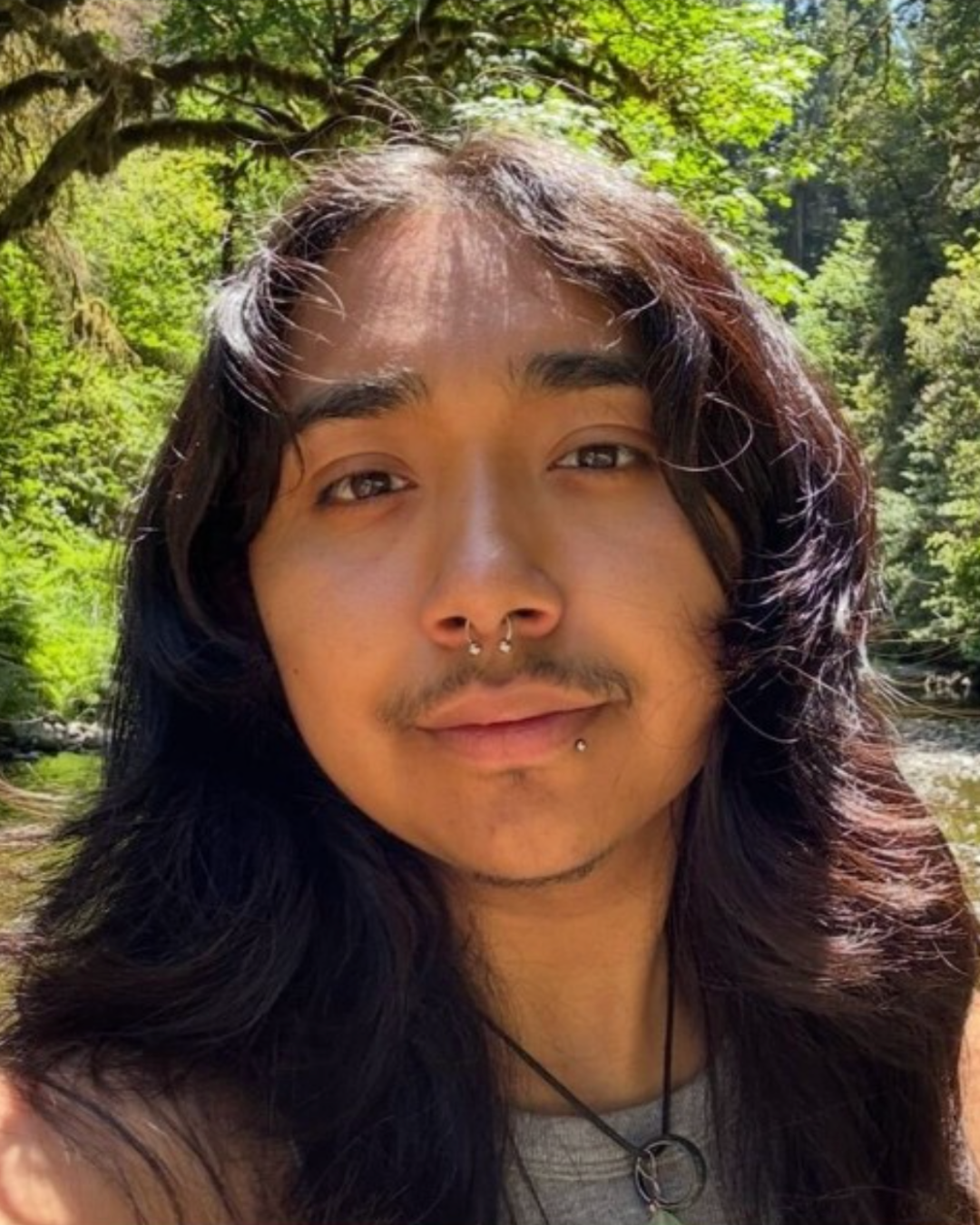
Lu Orona recounts his experience beginning transition at Children’s Hospital Los Angeles (CHLA) — the same institution that recently announced it would no longer provide gender-affirming care, even to young adults who have relied on it for years.
When I was 17, I began my medical transition at Children’s Hospital Los Angeles (CHLA). Getting there took more than a year of obstacles: endless referrals, canceled appointments, and being told again and again that “we don’t do that here.” CHLA became my first real opening, the place that finally treated me as someone who deserved care instead of as a problem to be managed.
Before that, I had lived in a body that never felt like mine. I didn’t know what safety or ease felt like until I began testosterone. A year later, CHLA approved me for top surgery. For the first time, I could breathe deeply without the weight of a binder or the heavier weight of a healthcare system that had long rejected me. It was the first time I felt whole.
At my first consultation, I was shaking, expecting another rejection. Instead, I was treated with dignity. The day I gave myself my first testosterone injection. I cried, not from fear, but from the overwhelming sense that I was finally allowed to exist as myself. It was the beginning of a freedom I had been told I’d never have.
In the months that followed, the suicidal thoughts that once defined my days began to quiet. For the first time, I felt alive rather than just enduring life. I could laugh with friends, feel the sun on my skin, and experience my body as my own. CHLA had become my anchor in a world that so often told me I didn’t belong.
Then, this summer, that lifeline was cut.
In July, CHLA announced it would stop providing gender-affirming care, not just for minors, but for young adults like me. At 23, after five years of consistent care, I was told that my treatment would end. The same hospital that once helped me feel safe had withdrawn that safety without warning.
The decision is cruel in its inconsistency: CHLA continues to offer hormones and surgeries to cisgender patients, yet those same treatments are now off-limits for trans people. The hospital’s public statement framed the change as a policy for minors, but I stand as living proof that young adults are also being abandoned, with consequences that are immediate and devastating.
Losing CHLA doesn’t simply mean finding another doctor. It means starting over in a healthcare maze filled with waitlists, insurance denials, and clinics that treat trans care as an afterthought. I’ve lived this before. When I lost access to testosterone due to an insurance gap, my body shifted rapidly, my periods returned, my hormonal balance collapsed, and my mental health deteriorated. It took half a year before I felt stable again.
This is not only about healthcare logistics. It’s about trust, and how fragile it becomes for people who already face discrimination at every level of the medical system. Trans people experience higher rates of anxiety, depression, and trauma precisely because our access to care is never guaranteed. When an institution like CHLA walks away, it reinforces a message that has haunted us for decades: our health is conditional, our lives negotiable.
Accountability must come now, not later. If one institution retreats, others have a moral duty to step forward. Leadership in healthcare cannot mean showing up for Pride Month and disappearing when controversy arises. It must mean sustained, public, and enforceable commitments to trans patients—commitments that do not bend under pressure. Symbolic support is no longer enough. What we need are permanent policies and protections that make our care non-negotiable.
This responsibility extends beyond hospitals. Lawmakers, insurers, and the public must recognize that gender-affirming care is not elective. It is evidence-based, essential, and for many of us, life-saving. When it is stripped away, people suffer and some will not survive. The impact reaches far beyond youth, affecting young adults like me who are left without options mid-treatment.
This moment cannot be allowed to fade into another headline. Each closure, each withdrawal of care, pushes trans people back into silence and despair. CHLA may have stepped away, but I will not disappear with it.
We deserve a future in which trans people do not merely survive but thrive. That future is not an abstraction; it is possible, and the fight for it begins now.
Lu’s op-ed was presented on behalf of the California LGBTQ+ HHS Network in honor of Transgender Awareness Week 2025
COMMENTARY
Uplifting small businesses uplifts us ALL
If we want to keep West Hollywood’s economy strong, we have to make sure our systems are helping, not hindering, the people who invest here.

By West Hollywood Councilmembers John M. Erickson and Danny Hang
When we ran for City Council, we both heard the same message repeatedly from residents and small business owners alike: it’s too hard to open a business in West Hollywood. From boutique owners on Santa Monica Boulevard to new café operators on the Eastside, people shared stories of navigating a complex maze of permits, design reviews, and approvals that can take months — sometimes more than a year — to complete. And if we are going to keep out the big box stores, create a steady revenue stream that helps fund our wonderful services, and protect our small-town charm, something needs to change.
That’s why we’ve coauthored a new policy initiative to streamline West Hollywood’s business permitting and signage regulations, making it faster, clearer, and more predictable for entrepreneurs to get up and running. This process in no way prevents community participation—it encourages it by putting people first.
Our small businesses are what make West Hollywood so special. They bring creativity, culture, and community to every block. But every month that a storefront sits empty or an opening is delayed costs jobs, tax revenue, and local vibrancy. If we want to keep West Hollywood’s economy strong, we have to make sure our systems are helping, not hindering, the people who invest here.
Cutting Red Tape, Not Corners
The City has already taken important steps through its Permitting Enhancement Initiatives, such as the Permit Navigator Program, which provides one-on-one support to guide business owners through the process, and the Over-the-Counter Plan Review, which allows low-impact projects to get same-day approval. These programs have helped, but it’s time to go further.
Our proposal directs City staff to take a comprehensive look at how we can streamline and modernize the entire permitting process, from tenant improvements to signage, and bring back recommendations to the City Council by Q1 2026 or as part of the next fiscal year’s work plan.
That review will include looking at how long it currently takes to open a new business, identifying where the delays are, and setting clear performance goals to measure progress. For example, we’re suggesting a target of getting 90 percent of new non-food businesses open within 120 days of application and food businesses within 180 days. These goals are ambitious but achievable, and they’ll give everyone a clear sense of accountability.
Updating Outdated Signage Rules
Another key part of this effort is updating West Hollywood’s sign ordinance. Our city has one of the most creative business communities in the country, yet many of our sign regulations were written decades ago and no longer reflect more effective, 21st-century norms for businesses to advertise and express their identity today.
We’re calling for staff to explore how signage rules can be modernized and streamlined, while still upholding West Hollywood’s design standards and visual character. That might mean allowing certain types of signs to be approved administratively rather than going through multiple rounds of review, clarifying what qualifies as a “creative sign,” and ensuring our rules keep pace with advances in technology and accessibility.
By making these updates, we can reduce unnecessary delays for business owners while still protecting what makes our city visually iconic.
Listening to Businesses, Measuring Success
This process will be collaborative. We’re directing staff to engage directly with the West Hollywood Chamber of Commerce, small business owners, local tenants, and neighborhood groups to ensure we’re identifying the right solutions and focusing on what matters most to those directly impacted. Again, this proposed process encourages robust community participation.
We’ll also ask for data (one of the most important tools we have at our disposal), a snapshot of recent permit applications, how long they took to process, and where improvements can be made. This transparency will create a baseline for tracking success over time, ensuring our efforts are grounded in results, not rhetoric.
Building on Our Progress
This initiative builds on the work of the Small Business Initiative Implementation Plan, adopted by the Council in 2023, which set out a roadmap to make West Hollywood more business-friendly (after all, we were named the most business-friendly city in 2021 by the Los Angeles County Economic Development Corporation). It also aligns with California’s AB 671, which now requires cities to expedite plan reviews for restaurant tenant improvements.
Together, these reforms will help ensure that West Hollywood continues to be a place where businesses — especially small, locally owned ones — can thrive.
Time for Swift Action
We’ve heard the feedback. We know the challenges. It’s time to act. Now.
Streamlining the permitting process isn’t just about efficiency; it’s about equity. Small business owners, especially first-time entrepreneurs and people from underrepresented communities, often don’t have the resources to navigate a slow and complicated system. By simplifying the process, we’re creating more opportunities for everyone.
When our local businesses succeed, our community thrives. We’re proud to bring forward this initiative, and we’re committed to working with our staff, local partners, and residents to make doing business in West Hollywood faster, clearer, and fairer for all.
John Erickson is a Councilmember and Former Mayor of the City of West Hollywood and a candidate for California State Senate District 24.
Danny Hang is a Councilmember of the City of West Hollywood and serves on the West Hollywood City Council Subcommittees for the Laurel House Project and Hart Park Phase II Improvements.
Commentary
Cities can’t improve the future with yesterday’s rules
California cities can’t keep building 21st-century infrastructure with 20th-century rules. It’s time to give local governments the flexibility to deliver for the people they serve.

Editor’s note: This piece is a follow-up to Councilmember Erickson’s August 12 op-ed, “Why California Must Remove the Roadblocks to Safer Streets,” in the Los Angeles Blade.
When I wrote earlier this year about why California must remove the roadblocks to safer streets, I focused on what local governments like West Hollywood can do to fix our own processes. At our October 20 Council meeting, I’m advancing a proposal that will streamline how we plan and deliver infrastructure projects to move traffic better and make our streets safer—without unnecessary delays.
But sadly, this proposal is just not enough. Local reform can only go so far, as California’s cities are bound by outdated state contracting laws that tie our hands, waste taxpayer money, and make it harder to deliver the improvements our residents deserve.
If we’re serious about making our communities safer, cleaner, and more sustainable, we need statewide reform of the Public Contract Code—and that means allowing every city and county to utilize a best value contracting method for public projects.
Modernizing How We Improve Infrastructure
Under current state law, most cities must award public works contracts based solely on the lowest bid. On paper, that sounds fair. In practice, it often means that the lowest price wins over the best qualified bid—leading to cost overruns, project delays, and endless change orders. It’s the government equivalent of buying the cheapest option first and paying more for it later.
Best value contracting flips that equation. It allows cities to weigh qualifications, experience, sustainability, and innovation—not just price—when selecting contractors. This approach has already been proven successful by counties, universities, and some charter cities. But most local governments in California don’t have permanent access to this tool.
That needs to change.
If cities like West Hollywood could permanently use best value contracting, we could deliver safer streets, park improvements, and infrastructure upgrades faster, more efficiently, and at lower cost to taxpayers.
Cutting Bureaucratic Bloat and Building Trust
Reforming the Public Contract Code to make best value contracting a statewide option would do more than save time and money—it would restore trust in government. Residents are frustrated by projects that take years to design and even longer to build. The truth is, much of that delay is built into the system itself: outdated rules that reward red tape over results.
By embracing a best value model, we’d reduce bureaucratic bloat, empower city staff to focus on outcomes, and give communities more transparency in how projects are delivered—with the best overall outcome. It’s smart, responsible government—and it’s long overdue.
From Local Action to Statewide Change
West Hollywood is doing its part. Our “Removing Infrastructure Roadblocks” policy will streamline local project timelines and prioritize safety. But real, lasting change requires partnership from Sacramento.
It’s time for the State Legislature to update the Public Contract Code and give every city the permanent ability to use best value contracting. With that change, we can finally build faster, smarter, and fairer—while saving money and lives along the way.
The path to safer streets starts in our cities, but the power to clear the roadblocks lies with the state. Let’s make it happen.
On Monday, October 20, the West Hollywood City Council will consider my proposal to remove local infrastructure roadblocks and set a new model for how cities can build more efficiently. I’m inviting everyone who believes in safer, smarter, and faster investment in our public spaces to show up and make your voice heard.
You can attend in person at the West Hollywood City Council Chambers (625 N. San Vicente Blvd.) or submit a public comment online at www.weho.org/agendas. Every voice matters — your input helps ensure we build a city and a state that works for everyone.
The path to safer streets starts here in West Hollywood. Let’s take that first step together — and let’s make sure California clears the roadblocks statewide.
California cities can’t keep building 21st-century infrastructure with 20th-century rules. It’s time to give local governments the flexibility to deliver for the people they serve.
John Erickson is a Councilmember and Former Mayor of the City of West Hollywood and a candidate for California State Senate District 24.
COMMENTARY
From rhetoric to persecution: When the State labels trans people as terrorists

In Los Angeles, where rainbow flags line Santa Monica Boulevard and queer communities carve out space to thrive, it can feel surreal that the federal government might one day classify transgender people as terrorists. Yet this no longer belies a paranoid fantasy. Reports surfaced this fall that the FBI is considering whether to categorize trans people under a newly minted threat label called “Nihilistic Violent Extremists”. This came in the wake of conspiracy theories that Charlie Kirk’s assassin was trans–theories that were later debunked. The Heritage Foundation, through its Project 2025 blueprint, has openly suggested that “transgender ideology” belongs in the same basket as terrorism. What sounds like fringe demagoguery is being whispered in the corridors of federal power.
The danger of such framing is terrifying. When governments confuse identity with ideology, they are laying the groundwork for persecution. We have seen this playbook before. In the 1930s, Adolf Hitler’s regime did not begin with concentration camps. It began with words. Jews were depicted as corrupting influences, dangerous parasites, and threats to Aryan purity. Bureaucratic edicts stripped them of jobs, banned them from public schools, and erased their presence from civic life. This sort of parallels what is happening to trans people right now–we have been banned from the military, we can’t use the bathroom of our choosing, and we are being denied critical healthcare. A rhetorical shift–from neighbor to danger–makes it possible for ordinary citizens to tolerate, and even participate in, their eventual destruction.
On his first day back in office, Trump signed Executive Order 14168, erasing gender identity from federal recognition, cutting funding for care, and redefining sex as fixed and immutable. Another order, 14190, criminalizes teachers who affirm a student’s pronouns or facilitate their social transition, equating simple recognition with exploitation. These are not abstract debates over language. They are policies that dictate whether people can live authentically, whether youth can find safety in schools, and whether families can see their children treated with dignity. To then float the idea of designating trans people as extremists is not an isolated thought experiment. It is a continuation of a campaign already intent on erasing us.
Just as Hitler began by classifying Jews as subversives, today’s political leaders risk classifying transgender people as national security threats. In both cases, identity is treated as a contagion. In both cases, the state deploys the language of danger to justify measures that would otherwise be unthinkable. And in both cases, the consequences for silence are catastrophic. When trans existence is conflated with terrorism, it becomes easier for ICE to surveil us, for policymakers to justify banning our gatherings, and for agencies to deny us access to the very structures of public life. What begins as words in a memo can end in barbed wire, if history is any guide.
Los Angeles knows better than to believe itself immune. The city has long been a sanctuary for queer and trans people, a place where art and activism have fused into survival. Yet federal classifications do not stop at county lines. A Pride march in West Hollywood could be branded a security risk if Washington decides that trans identity itself is extremist. A parent advocating for their child at a Los Angeles school board meeting could suddenly find their activism logged in a federal file.
The stakes of this moment are enormous. If the American public shrugs at the possibility of transgender people being labeled “nihilistic terrorists,” we risk normalizing the logic of persecution. And if that logic hardens, it will not stop with us. Once a regime learns to brand identity itself as dangerous, it will reach for new scapegoats to sustain its power.
Los Angeles has always been a city of resistance, a place where queer life refuses to be hidden, a place where silence is not an option. That spirit must animate our response now. To accept these federal whispers as mere rhetoric is to betray the lessons of history. To resist them is to defend not only transgender lives, but the integrity of democracy itself.
Words prepare the ground for action. Plenty of dictators have taught us that. The only question is whether we will recognize the warning signs in time.
Isaac Amend is a writer based in the D.C. area. He is a trans man and was featured in National Geographic’s “Gender Revolution” documentary. He serves on the board of the LGBT Democrats of Virginia and is a Yale graduate. You can follow him on Instagram at @isaacamend
Commentary
PrEPARING California for the future and better supporting those living with HIV
AB 554 is a huge step in the right direction; however, without consistent leadership from policymakers, those living with HIV will continue to be the first on the budget chopping block.
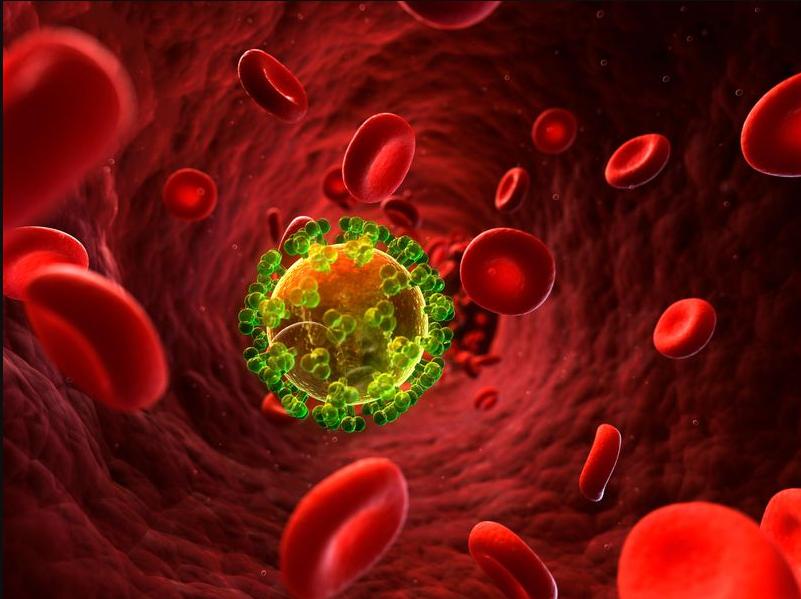
When I learned I was living with HIV nine years ago, there were a lot of questions to be answered: how will I access treatment? Will I feel safe and respected by my care team? What does stigma look like for me in the fourth decade of the HIV epidemic?
While I was fortunate to have a wonderful team of case managers and health care providers who guided me through an unfamiliar and complex medical system, I’ve heard countless stories of people fighting tooth and nail just to find appropriate care, let alone treatment.
Our country’s labyrinthine, convoluted health system is cluttered with obstacles like prior authorization and step therapy. Both of which needlessly delay access to health care by imposing vague requirements and/or forcing patients to “fail” a series of medications before they are granted access to the one actually prescribed by their physician. For game-changing HIV prevention drugs like PrEP, these hurdles endanger lives. Combined with our current federal landscape being incredibly antagonistic (i.e., the Trump Administration trying to gut $1.5 billion in HIV prevention funding, among a laundry list of offenses), the LGBTQ+ community is facing disproportionate hardships that are exacerbating disparities and contributing to further stigmatization.
Thankfully, California policymakers are doing their part to protect our community. Assembly Bill 554, authored by Assemblymember Mark González (D-Los Angeles), follows in the footsteps of nine other states by ensuring coverage for all long-acting, injectable drugs used for PrEP and PEP. The bill “safeguards patient and provider choice” by eliminating cost-sharing and expanding access to a wider range of ARV medications to help bolster medication adherence rates. It also ensures coverage for future formulations of ARV drugs that are better at making HIV undetectable and untransmissible.
PrEP (pre-exposure prophylaxis) and PEP (post-exposure prophylaxis) are effective regimens for preventing the transmission of HIV when taken as prescribed. AB 554 enshrines quick access to these treatments, satisfying calls for health equity, especially for Black and Latino Californians, who face disproportionate transmission and infection rates.
AB 554 is a huge step in the right direction; however, without consistent leadership from policymakers, those living with HIV will continue to be the first on the budget chopping block. Just last week, the California Legislature passed a budget trailer bill (AB 144) that includes provisions to divert funds from the AIDS Drugs Assistance Program Rebate Fund toward general state operations.
California policymakers can’t say they’re countering the Trump Administration and supporting the HIV community if they’re also ripping the rug out from underneath us. AIDS Drug Assistance Programs are lifelines – they normalize diagnoses, fund direct services, and help uninsured and underinsured patients access essential care.
Ironically, while AB 554 will build upon the work of ADAPs to eliminate prohibitive barriers, AB 144 will steal funds from the program to instead boost state revenue. ADAPs already operate from a very small annual revenue of fixed federal funding awards per state. States taking more money away from these critical programs will threaten their ability to serve HIV patients. Moreover, these dollars are statutorily prohibited from being used for non-HIV care by Title II of the Ryan White CARE Act.
California is destined to repeat the sins of the past unless Governor Newsom steps in. For too long, those living with HIV have been isolated, cast aside, leveraged for political gain, and dropped soon thereafter if something better comes along. We are not budget dust, we are not pawns in a political game, we are real people with real voices, and we’re asking Governor Newsom to do what’s right: redline the ADAP provisions from AB 144 and sign AB 554 into law.
California can lead the nation in doing what’s right for all communities. But it starts with policy, and we have to make sure policies are centered around those they impact.
Kalvin Pugh is the state policy director for the Community Access National Network, a national 501(c)(3) nonprofit that works to improve access to health care services and supports for people living with HIV/AIDS and viral hepatitis through advocacy, education and networking.
Commentary
Pride & promiscuity: What the current face of gay sex culture says about us
A dive into the historical, social, and psychological motivation that drives us into each other’s arms.
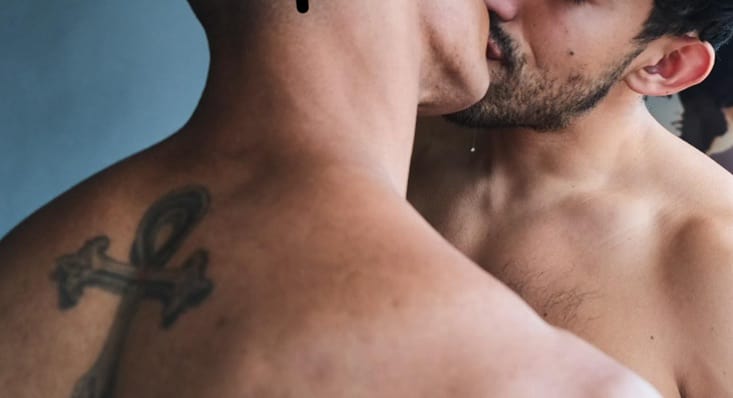
As gay men, are we having more sex than our fore-daddies or just more open about it? Between Grindr dings that hit harder than Double Scorpio, PrEP prescriptions as our daily gay-ly vitamin, and the ever-present anxiety of FOMO, I think it’s fair to ask, is hooking up becoming a numbers game, more focused on quantity vs. quality, for many of us ‘mos?
For eons, gay sex has been both a subject of fascination and moral panic for those on the hetero side of the picket fence. But the conversation has shifted. Today, the questions come less from pearl-clutching conservatives and more from within our own community. How much is too much? Are we liberated yet? Are more and more of our gay brethren basking in the waters of heteronormativity? And to what extent are our sex lives driven by libido, validation, or the simple fact that we can?
Let’s start with the obvious culprit: technology. Of course, as gay men, the first thing that we did following the birth of the smartphone was create a way to see all of the fair-game dick within a one-mile radius. We were the first to adopt hookup apps as essential social tools, from the early days of Grindr to the onset of Sniffies. According to research cited by Gay Counsellor, compulsive use of apps can mirror patterns of behavioral addiction, where “likes” and “messages” stimulate dopamine in ways eerily similar to gambling. The buzz of a notification becomes less about actual intimacy and more about self-worth. Sex as currency, matches as validation.
A TIME article warned in 2014 that hookup apps might be “destroying gay relationships,” arguing that the sheer efficiency of digital cruising left little incentive for building intimacy. Why invest in a partner when you can have instant access to some NSA ass five feet away? It’s the Amazon Prime of getting off – quick delivery, same-day service.
I think that these critics are missing a nuance here. Apps aren’t inherently bad; they are simply adding a Cialis to what’s already in our culture. If we already treat sex as a form of transactional validation in normal life, apps inject that insecurity with steroids.
Then there’s PrEP, the little blue pill that revolutionized sexual health and, in turn, our sex lives. Since its FDA approval in 2012, Truvada has been both a miracle and a lightning rod. A CUNY study found that PrEP has fueled perceptions of promiscuity. The assumption is that biomedical safety nets invite reckless raw-dogging abandon, reinforcing the stereotype of gay men as hedonistic ho-bags.
But the data tells a more complicated story. Research published in the Journal of Medical Internet Research (2022) suggests that while PrEP use does correlate with higher numbers of sexual partners for some, it also fosters healthier discussions about safety and reduces anxiety around HIV. Translation: PrEP doesn’t make people slutty, it makes them feel secure. If this sense of sexual security emboldens them to embrace their sexuality more fully, is that really a problem? Or is it just a shift in norms?
Of course, none of this exists in a vacuum. As The Conversation notes, homosexuality may have evolved as much for social bonding as it did for reproduction. Historically, gay sex wasn’t just about pleasure but also survival, solidarity, and even networking. In the years after Stonewall, sex was political. It was a sweaty form of protest against heteronormative repression, a celebration of community in defiance of shame.
But in 2025, sex has also become… a competition. Liam Heitmann-Ryce-LeMercier’s essay on Medium critiques how queer culture sometimes conflates liberation with obligation. Promiscuity is framed less as personal choice and more as proof of authenticity. Don’t want to sleep around? Then maybe you’re repressed, prudish, or not “gay enough.” The pressure cuts both ways – to have sex, to crave sex, to keep up with everyone else’s sex.
And here’s where FOMO comes in. For every wild Saturday night Instagram story, there’s someone scrolling at home, wondering if they’re missing out – not on an orgasm, but on acceptance and belonging. The sex itself is just the trophy to the win, secondary to the validation of being chosen, the real prize.
So what actually drives this culture? Libido is undoubtedly up in this. Gay men, like all people, are wired with sexual impulses. But the psychological factors are harder to ignore. Validation looms large. The “yes” of a stranger affirms desirability. The “no” can often feel like a reflection of our worth. Ego magnifies the stakes, turning sex from a dance in the sheets into a scoreboard.
A telling study in the International Journal of Environmental Research and Public Health posited that compulsive app users often report using sex as a coping mechanism for loneliness and low self-esteem. Which inevitably raises the question – are we having more sex because we want it, or because we need to prove something, whether that is to ourselves and to others?
No discussion of queer sex culture or sex as a whole would be complete without tackling entitlement. Many of us know the type: the man who can’t take “no” for an answer, who interprets rejection as an insult, who cloaks his bruised ego in accusations of rudeness or exclusion.
Here’s the truth: just because you hand out a cookie or two doesn’t mean you have to share with the class. Consent is not a punch card system, and no one is entitled to anyone else’s body. Yet too often, rejection is reframed as cruelty, with aggressors painting themselves as victims. Is it gaslighting? Maybe. Is it delusion? Almost certainly. The lesson is simple: declining sex doesn’t make you a monster, and other people’s inability to handle rejection doesn’t make it your problem. Autonomy is not negotiable.
So are gay men more promiscuous today? In some ways, yes. Apps have streamlined access, PrEP and doxy have lowered risks, and cultural stigma is withering. But promiscuity isn’t the villain or the hero of this story. It’s a spectrum, shaped by psychology, politics, history, technology, and so much more.
For some, sex is liberation; for others, it’s compulsion. For some, it’s community; for others, it’s ego. The pearl-jammed peril lies not in the sex itself but in mistaking quantity for quality, validation for value, or pressure for choice.
Our challenge isn’t to moralize but to contextualize. To ask ourselves (and only ourselves) not how much sex we’re having, but why, and to respect that everyone’s reasons for getting down are their own. And to remember that liberation isn’t measured by tallies on a jockstrap waistband but by freedom from stigma, coercion, and shame. Stay safe and stay self-aware, my fellow bedfellows.
-

 Commentary1 day ago
Commentary1 day agoFinding myself in the West Hollywood nightlife scene
-

 COMMENTARY5 days ago
COMMENTARY5 days agoThe hazards of hating ‘Heated Rivalry’
-
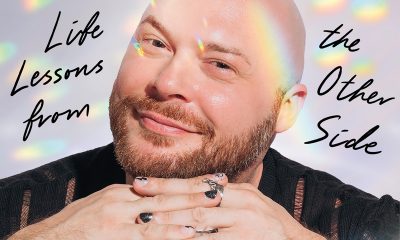
 Books3 days ago
Books3 days agoThis gay author sees dead people
-

 Los Angeles1 day ago
Los Angeles1 day agoAIDS Healthcare Foundation will celebrate its legacy of food relief at the New Year’s Rose Parade
-
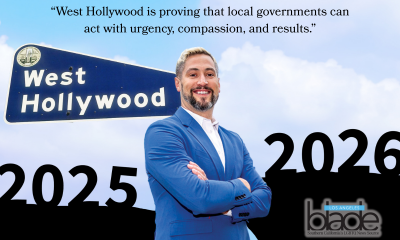
 Commentary11 hours ago
Commentary11 hours agoLooking back on ’25. Looking forward to ’26.
-

 Movies13 hours ago
Movies13 hours agoThe 25 greatest queer movies of the 21st century so far
-

 Parks & Recreation5 hours ago
Parks & Recreation5 hours agoFor more than two decades, Los Angeles Neighborhood Land Trust has worked to address park inequities
